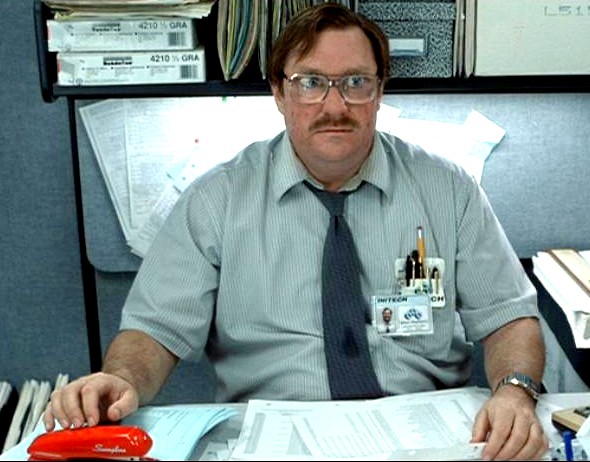 You know those endorsements you can give people on LinkedIn? Those are the little skills that you can click on at the top of a page on the site? They of adding little value to a person’s profile; They of nothing more than what amounts to a batch of UX tomfoolery to get users to “engage.”
You know those endorsements you can give people on LinkedIn? Those are the little skills that you can click on at the top of a page on the site? They of adding little value to a person’s profile; They of nothing more than what amounts to a batch of UX tomfoolery to get users to “engage.”
Those suck. Yeah, we’re not going to talk about those.
However, the recommendations that LinkedIn offers can be a really valuable tool for your career. Who wouldn’t want to be recognized for something they did or contributed to the success of?
Think about the ways in which we use recommendations, and it really is an impactful part of true user engagement. We ask peers to recommend us (and vice versa). We recommend current or past clients, as well as extraordinary supervisors and team members.
And the fact is, recruiters use them too. I comb through the recommendations of a candidate I’m really interested in. My thought is, that in those I can find either talking points or a common string of a skill this person has. So they really serve a multitude of purposes. In an unusual turn of events, everybody wins.
I’m personally very selective about who I write recommendations for, and for good reasons. First, it’s the interwebs. That’s out there forever, and I want to make sure it’s something I’ comfortable with having out there forever. Secondly, it has to be someone that I have a long-standing relationship with. Said another way, someone I have some strong longitudinal data on – in so far as their awesomeness. Lastly, It’s a tool that should be saved for expressing true, valid superlatives. Not as a tool to build a stronger relationship. Or, in my recent experience, the first attempt at any relationship after connecting with someone.
Seriously. Three people in 90 days have asked me for recommendations on LinkedIn. Three people I have not interacted with since accepting their invite sometime back. Three! And each of them sent the blanket snippet that LinkedIn defaults to. (Side note: I hope the person who came up with that default was relegated to the basement office.)
“I’m sending this to ask you for a brief recommendation of my work that I can include in my LinkedIn profile. If you have any questions, let me know.
Thanks in advance for helping me out.”
One time, OK. You can’t fix stupid. But two? Then three? People…just don’t understand the concept here, do they?
Your Recommendation Engine Is Broken
 Let’s see what’s wrong with this picture:
Let’s see what’s wrong with this picture:
- You connected with me, and never followed up after that. This is not a cardinal sin as far as networking goes. It’s helpful, and in the “nice to have” bucket. I can’t say you are on my “valuable connections” list.
- You want me to recommend your work – for display on your profile. Work I’ve never seen I remind you, because a. you never showed it to me, or b. we have never worked together in ANY capacity. Oh, so titillating. The motivation for my recommendation is growing by the second.
- You value my recommendation so much, that you decided you didn’t even need to put any personalization or specification in the note. So, is “your work” your whole career? I would think it’s a very small group of people who can recommend many (any?) people for the course of their entire career body of work. But that’s not the point. If you’re going to ask, don’t just spam it.
Long story short, I won’t be writing up any one of those recommendations. And I’m sorry (not sorry) that I can’t oblige. But in this crazy and mixed up world, all I have left is my integrity. And I’m keeping it for me. Maybe writing them a sarcastic bogus recommendation, about how they just blandly asked for a generic one would be the way to go. But honestly, I can amuse myself in other oddly productive ways.
So, I guess these folks will a bit heartbroken, waiting this long for my recommendation. Then again, it was just spam, so maybe not.
Click here for more recruiting news and views from Pete at his blog, Recruiting In 3D.
 About the Author: Pete Radloff has over 13 years of recruiting experience in both agency and corporate environments, and has worked with such companies as Comscore, National Public Radio and Living Social.
About the Author: Pete Radloff has over 13 years of recruiting experience in both agency and corporate environments, and has worked with such companies as Comscore, National Public Radio and Living Social.
With experience and expertise in using technology and social media to enhance the candidate experience and promote strong employer brands, Radloff also serves as lead consultant for Exaqueo, a high-end workforce consulting firm. An active member of the Washington area recruiting community, Radloff is currently a VP and sits on the Board of Directors of RecruitDC.
Follow Pete on Twitter @PJRadloff or connect with him on LinkedIn.
By Pete Radloff
Pete Radloff is a veteran recruiter, sourcer and consultant, who has been in the industry since 2000, with experience in both agency and corporate settings. Pete’s passion stretches across several areas of talent acquisition, including recruitment and sourcing, social media, employment branding, recruitment operations and the training and mentoring of recruiters. Currently the Principal Technical Recruiter for comScore, and a Lead Consultant with exaqueo, Pete has previously worked for high-growth organizations such as NPR and LivingSocial. In addition to recruiting top talent both in the U.S. and abroad for these companies, Pete has developed successful recruitment and sourcing frameworks, recruitment processes and procedures, and enhancements to the candidate experience to enhance employer brand. Being part of the local recruiting community in Washington, D.C. has always been important to Pete. He was a member of Board of Directors for recruitDC since for six (6) years, and has also been a speaker at several recruitDC events. He's also a contributing writer at RecruitingDaily and SourceCon. You can find him on LinkedIn and Twitter, or at his site, RecruitingIn3D
Recruit Smarter
Weekly news and industry insights delivered straight to your inbox.





